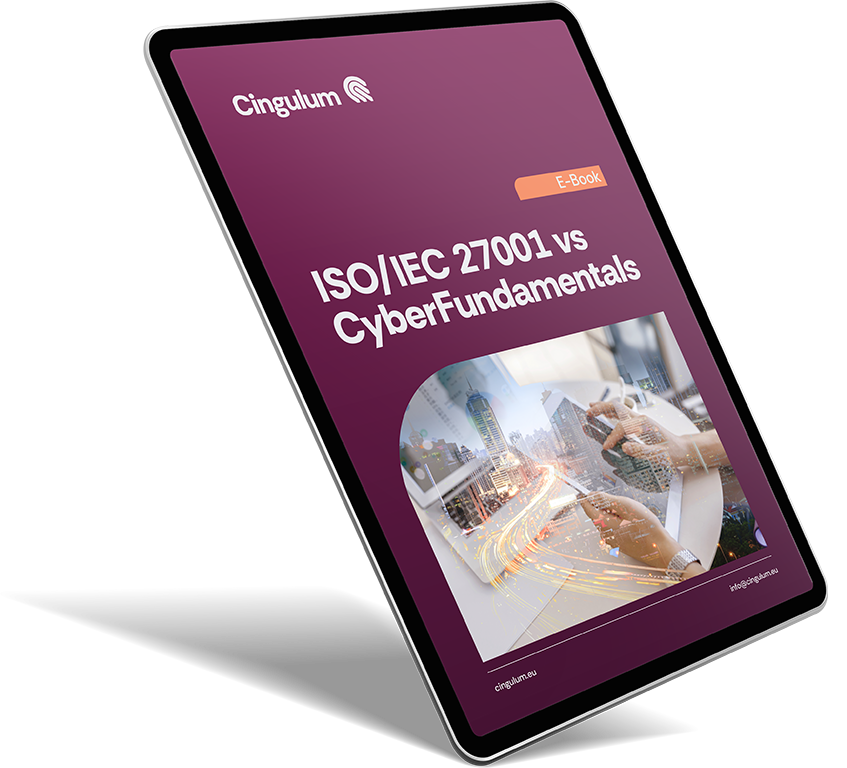What is IT Security?

Data is one of an organisation’s most valuable assets. But with this digital growth comes a rising tide of threats, from hackers and malware to insider risks and data breaches. That’s where IT security comes in.
This article explores what IT security is, why it’s essential, how it has evolved, and what the future may hold. We’ll also look at who’s responsible for IT security and how companies like Cingulum help organizations stay protected.
What Is IT Security?
IT security, short for Information Technology security, refers to the strategies, tools, and processes used to protect an organization’s digital information and technology systems from threats, vulnerabilites and risks. This includes safeguarding:
- Networks
- Servers
- Databases
- Applications
- Devices
- Cloud environments
IT security focuses on preventing unauthorized access, data loss, and cyberattacks, while ensuring systems remain available and operational.
Why Do Organizations Need IT Security?
Every modern organization, regardless of size or industry, relies on technology. With this reliance comes a host of vulnerabilities:
- Sensitive data stored in the cloud
- Remote work and BYOD (Bring Your Own Device)
- Complex third-party integrations
- Increasing regulatory requirements
Without proper IT security measures, businesses face serious risks: data breaches, operational disruptions, reputational damage, legal liabilities, and financial losses.
IT security is a fundamental part of doing business in the digital age.
How Has IT Security Evolved Over Time?
IT security has come a long way from simple antivirus programs and basic firewalls. As digital infrastructure has grown more complex, so too have the threats — and the defenses.
Key milestones in its evolution include:
- Early 2000s: Focus on perimeter security and securing internal networks
- 2010s: Emergence of cloud computing, mobile devices, and advanced persistent threats (APTs)
- 2020s: Introduction of Zero Trust architecture, endpoint detection & response (EDR), and AI-powered threat detection
In addition to these developments, the rapid expansion of IoT (Internet of Things) and IIoT (Industrial Internet of Things) has introduced new challenges. Thousands of connected devices — from smart thermostats to factory sensors — have significantly broadened the attack surface, requiring new approaches to visibility, segmentation, and device-level security.
Looking ahead, IT security will increasingly rely on:
- Artificial intelligence and machine learning for predictive threat detection
- Automation and orchestration for rapid response
- Quantum-safe encryption to prepare for future cryptographic risks
- Real-time threat intelligence for proactive defense
- Enhanced IoT/IIoT security frameworks to manage and secure vast, decentralized networks
Who Is Responsible for IT Security?
IT security is a shared responsibility across the organization, typically involving:
- CISO (Chief Information Security Officer): Leads the overall security strategy
- IT Security Analysts: Monitor systems and respond to incidents
- System Administrators: Implement and maintain secure infrastructures
- Developers & DevOps: Ensure applications are built with security in mind
- Management & Employees: Trained to recognize and avoid common security threats
Building a security-first culture is essential to ensure every team member plays their part.
IT Security vs. Cybersecurity: Is There a Difference?
The terms IT security, cybersecurity, and information security are often used interchangeably, but they each have distinct focuses:
- IT security is the broadest term. It refers to protecting all digital assets within an organization — including hardware, software, networks, and data — from unauthorized access, damage, or disruption.
- Cybersecurity is a subset of IT security. It focuses specifically on defending systems and data from external cyber threats, such as hacking, malware, phishing, and ransomware.
- Information security (InfoSec) is more data-centric. It refers to the protection of information — whether digital or physical — from unauthorized access, disclosure, alteration, or destruction.
At the core of information security is the CIA triad, a foundational model that guides security strategies:
- Confidentiality – Ensuring only authorized individuals can access sensitive data
- Integrity – Guaranteeing that data is accurate and untampered
- Availability – Making sure systems and data are accessible when needed
In simple terms:
- Information security protects the data itself.
- Cybersecurity protects against digital threats.
- IT security covers the entire infrastructure that enables both.
Think of cybersecurity and InfoSec as critical components of the broader IT security landscape — each playing a unique but interconnected role in keeping your organization safe.
How Cingulum Can Help
At Cingulum, we offer expert-driven CISO-as-a-Service solutions tailored to your business needs.
Whether you’re launching a security program from scratch or enhancing your current posture, our team of senior security consultants delivers:
- Proven cybersecurity leadership
- Industry-standard compliance and risk frameworks
- Hands-on support for cloud, data, and infrastructure security
The CISO brings the vision, expertise, and leadership needed to protect your data, build trust, and enable secure growth.
Need a trusted CISO on your side?
Contact Cingulum today to explore our CISOaaS services and take the first step toward a safer, smarter future.
Want to outsource your CISO?
Reach out and we’ll connect your with the right profile for your organisation.

